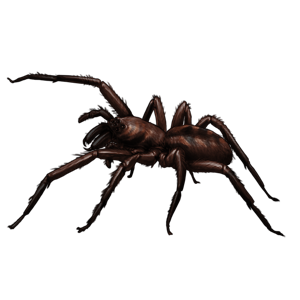Segestria florentina ()
About
This elegant fellow, commonly known as the green-fanged tube web spider, is actually the biggest segestriid spider inhabiting Europe. Despite originating in Europe, it can also be found in Argentina, Australia, and the Atlantic Islands.
As is typical for spiders, females are bigger than males, and may reach up to 22 mm of body length, while males may reach up to 15 mm. Their bodies are black in colour and contain hints of green iridescence, which is especially apparent on the chelicerae (fangs). The exceptionally dark body colour is the main trait that gives them a unique appearance among this family of spiders.
These spiders spin tubular webs, within which they rest and wait for prey to pull on the web's strings. The webs can often be found in the cracks of man made buildings, and if a female is inside, it's very likely she has laid eggs in her web. If the mother dies in the nest after laying her eggs, her body will be consumed by her children once they hatch. Adults emerge from June to November.
Their venom contains neurotoxins and insecticides. It is harmless to humans; however, their bites can prove to be quite painful nonetheless.

| Colors | (click to preview) |
|---|---|
         |
|